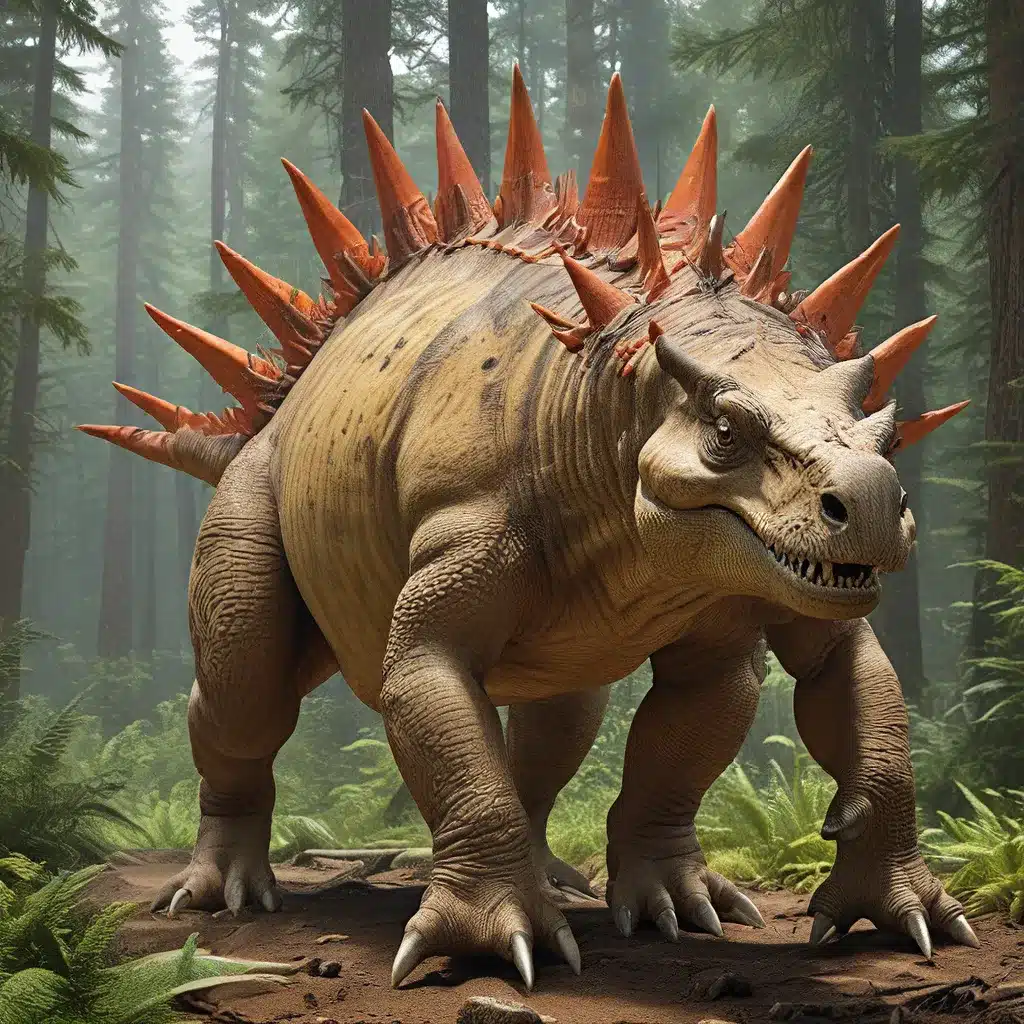
The Stegosaurus, a remarkable dinosaur that roamed the Earth during the Late Jurassic period, has captured the fascination of both paleontologists and the general public alike. This iconic armored herbivore, with its distinctive rows of plates along its back and the formidable spikes adorning its tail, is a testament to the remarkable diversity and adaptations that characterized the prehistoric world.
Unearthing the Secrets of the Stegosaurus
The story of the Stegosaurus began with its initial discovery in the late 19th century, when a remarkable fossil was uncovered in the Morrison Formation of Colorado, United States. This fortuitous find, made by renowned paleontologist Othniel Charles Marsh, would pave the way for a deeper understanding of this enigmatic creature.
The Stegosaurus, whose name translates to “roof lizard” in Greek, was a member of the Stegosauridae family, a group of armored dinosaurs known for their distinctive skeletal features. These features, including the iconic plates and spikes, have been the subject of intense scientific debate and speculation over the years.
The Evolutionary Enigma of the Stegosaurus
One of the most intriguing aspects of the Stegosaurus is its evolutionary history. Recent discoveries and advancements in paleontological research have shed new light on the origins and adaptations of this remarkable dinosaur.
The Stegosaurus is believed to have first appeared during the Late Jurassic period, approximately 155 to 150 million years ago, and it thrived until the end of the Jurassic, around 145 million years ago. This period was marked by significant climatic and geological changes, which in turn shaped the evolution of various dinosaur species.
Interestingly, the Stegosaurus is thought to have descended from earlier, more primitive armored dinosaurs, such as the Huayangosaurus and Chungkingosaurus, which shared similar skeletal features. The evolution of the Stegosaurus, with its specialized adaptations, highlights the remarkable diversity and adaptability of these ancient creatures.
Deciphering the Functionality of the Stegosaurus
One of the most intriguing aspects of the Stegosaurus is the purpose and function of its distinctive plates and spikes. Scientists have long debated the exact role these features played in the dinosaur’s survival and behavior.
Some researchers believe that the plates, which could measure up to 60 centimeters in height, may have served as a form of thermoregulation, allowing the Stegosaurus to regulate its body temperature by absorbing or radiating heat. This hypothesis is supported by the presence of a rich blood supply within the plates, which would have facilitated this process.
Another theory suggests that the plates may have been used for display and communication, with the ability to change color or even stand erect to intimidate potential predators or attract mates. The spikes on the Stegosaurus’s tail, known as the “thagomizer,” were likely used as a defensive mechanism, capable of inflicting serious injury on any would-be attackers.
The Stegosaurus in its Ecosystem
To fully understand the Stegosaurus, it is essential to examine its role within the ancient ecosystems it inhabited. As a herbivorous dinosaur, the Stegosaurus played a vital part in the food chain, consuming a variety of plant materials and contributing to the balance of the ecosystem.
Interestingly, the Stegosaurus is thought to have coexisted with other iconic dinosaurs, such as the Allosaurus, a formidable predator of the Late Jurassic period. The presence of these two species in the same habitat suggests a complex and dynamic interplay, where the Stegosaurus’s unique adaptations may have provided it with a degree of protection against its predators.
Moreover, the Stegosaurus’s distribution across various geographical regions, from North America to Asia, highlights the adaptability and resilience of this remarkable dinosaur. Its ability to thrive in diverse environments underscores the broader diversity and complexity of the prehistoric world.
Unveiling New Insights Through Technological Advancements
In recent years, the study of the Stegosaurus has been greatly enhanced by the adoption of advanced technological tools and scientific methods. The use of 3D scanning, computed tomography (CT) scans, and other innovative techniques has allowed paleontologists to gain unprecedented insights into the internal structure and function of the Stegosaurus’s skeletal features.
For example, the analysis of the Stegosaurus’s brain cavity has revealed intriguing information about its neurological capabilities and potential behaviors. Similarly, the study of its digestive system has provided clues about its dietary preferences and the way it processed plant material.
These technological advancements have not only deepened our understanding of the Stegosaurus but have also opened up new avenues of research, allowing scientists to explore previously unanswered questions about this remarkable dinosaur.
The Enduring Legacy of the Stegosaurus
The Stegosaurus, with its distinctive appearance and intriguing evolutionary history, has captured the public’s imagination for generations. Its enduring legacy is reflected in its widespread cultural representation, from museum exhibits and educational resources to its iconic presence in popular media and the arts.
As we continue to unravel the mysteries surrounding the Stegosaurus, it is clear that this dinosaur’s story is far from over. With each new discovery and technological advancement, our understanding of this remarkable creature grows, shedding light on the complex and awe-inspiring world of prehistoric life.
By studying the Stegosaurus and other ancient species, we gain valuable insights into the evolutionary processes that have shaped our world, ultimately enhancing our appreciation for the rich tapestry of life that has unfolded over millions of years. The Stegosaurus, with its unique adaptations and captivating features, stands as a testament to the enduring fascination and wonder that dinosaurs continue to inspire.


